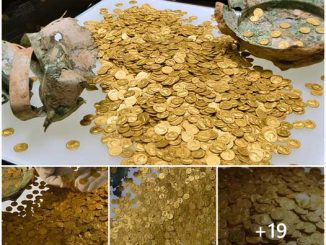This Celtic coin hoard found on Jersey has astounded archaeologists with a wealth of gold treasures.
Jersey Heritage’s conservation team were excavating an area known to contain gold jewellery when one end of a solid gold torc was uncovered.
The find followed the discovery of two other solid gold torcs – one gold-plated and one of an unknown alloy – along with a silver brooch and a crushed sheet gold tube. But the later artefact was considerably larger than anything previously unearthed on the island.
As well as a large, rigid neck ring, archaeologists say the torc has a massive decorative ‘terminal’ where it was likely to have been locked closed around the owner’s neck. The terminal is formed from two solid gold wheels, each about 4cm across and 1cm wide.
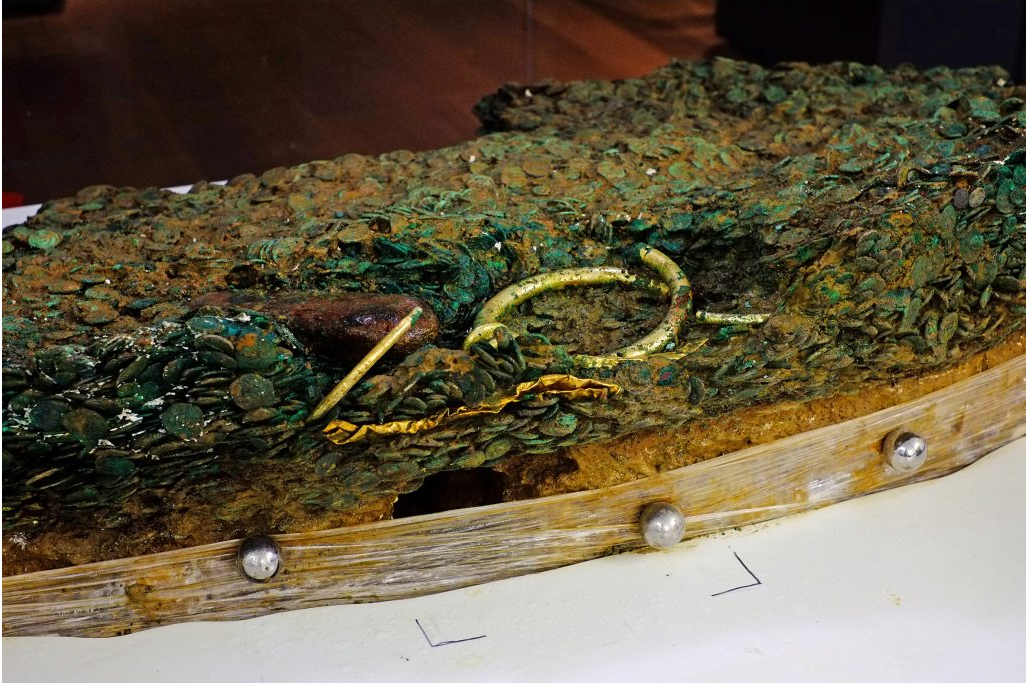
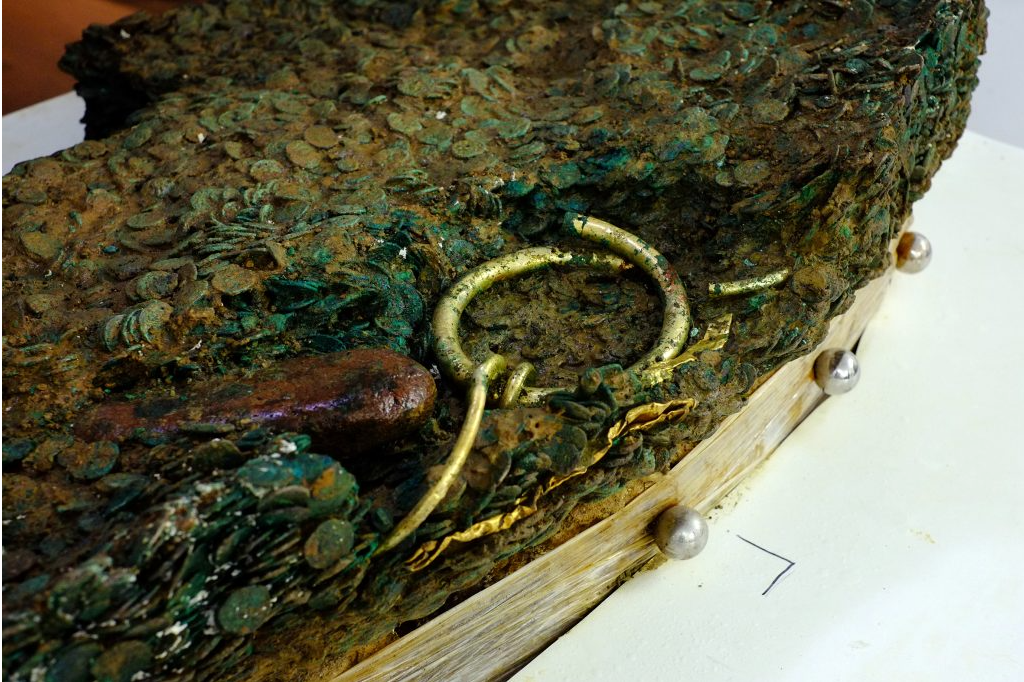
“It’s an incredible time here,” said conservator Neil Mahrer as they began the process of conservation. “Every hour or so we are finding a new gold object.
“We did see some gold jewellery on the surface of the hoard, but since we’ve started looking at this shoe-box sized area, we’ve uncovered a total of six torcs, five of which are gold and one which we believe to be gold-plated. This is the only one that we think is whole, though.”
Dr Andrew Fitzpatrick, an Iron Age jewellery expert who has been involved in studying jewellery found in other Jersey hoards, assisted with the interpretation. He had already identified comparable features in examples found in 2nd century BC hoards at Bergien, Belgium and Niederzier, Germany.
A small stone was also uncovered, possibly of local granite. Archaeologists say it may be no more than a pebble in the field that fell into the treasure pit during the burial. But as it is an odd shape and size, its purpose will be investigated.
At the end of the clearing period the torc was scanned in place to record its position to fractions of a millimetre before being removed, along with some of the other jewellery surrounding it.
A week-long opening in November 2015 allowed the public to watch conservator Neil Mahrer and his team preserve the coins, which were been re-dated to between 30-40 BC.
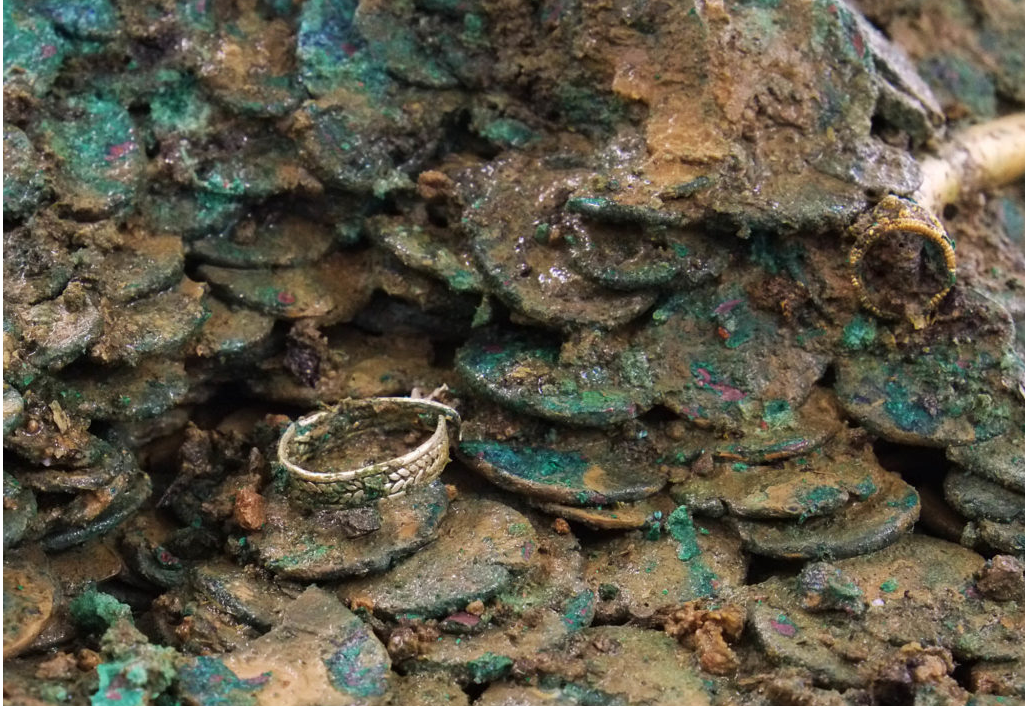
The second ring to emerge from the hoard
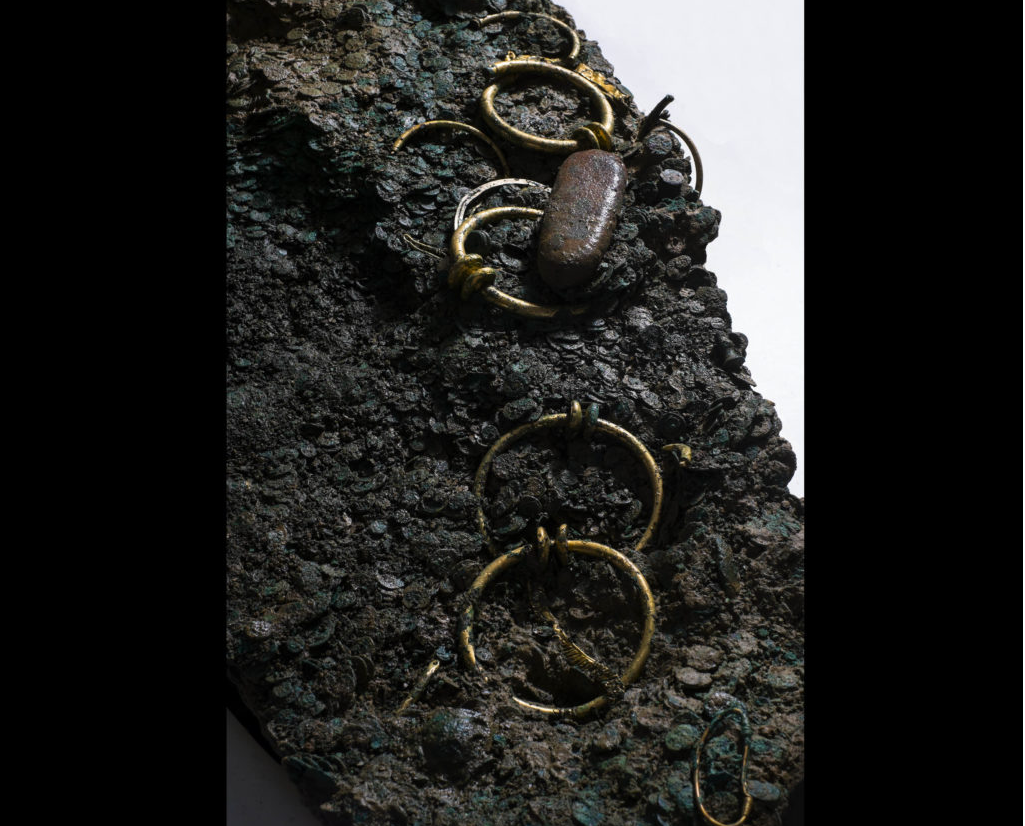

A detail of one of the torcs.
The coins were found to be mainly French with a small number from the south coast of England, with torques, a “beautifully-crafted” silver ring, a small blue bead and a square centimetre fragment of woven cloth also emerging from the magnificent hoard.
With the British Museum providing advice on the conservation, the hoard was too thick to x-ray so the team literally found each piece one by one they removed the coins over a 12 month period, laser scanning them before removing them.
The laser scanner was incredibly accurate and enabled the team to incorporate the data from the jewellery into a bigger 3D computer model they are building.

Detail from the coin hoard.

A close up of the haord.
“The gold torques are important to us because they were important to the Celts,” said Olga Finch, Jersey Heritage’s Curator of Archaeology.
“They were the equivalent of royal jewellery to these people and would only have been worn by individuals of high status.
“The torques will be analysed for further clues about the lives of the Celts. As well as engravings on the jewellery, samples can be taken from their hollow cores to get organic material that might reveal more about what was going on at the time, why the hoard was buried and to study the materials used in their manufacture to identify where they came from, giving insights in to travel and trade.”


